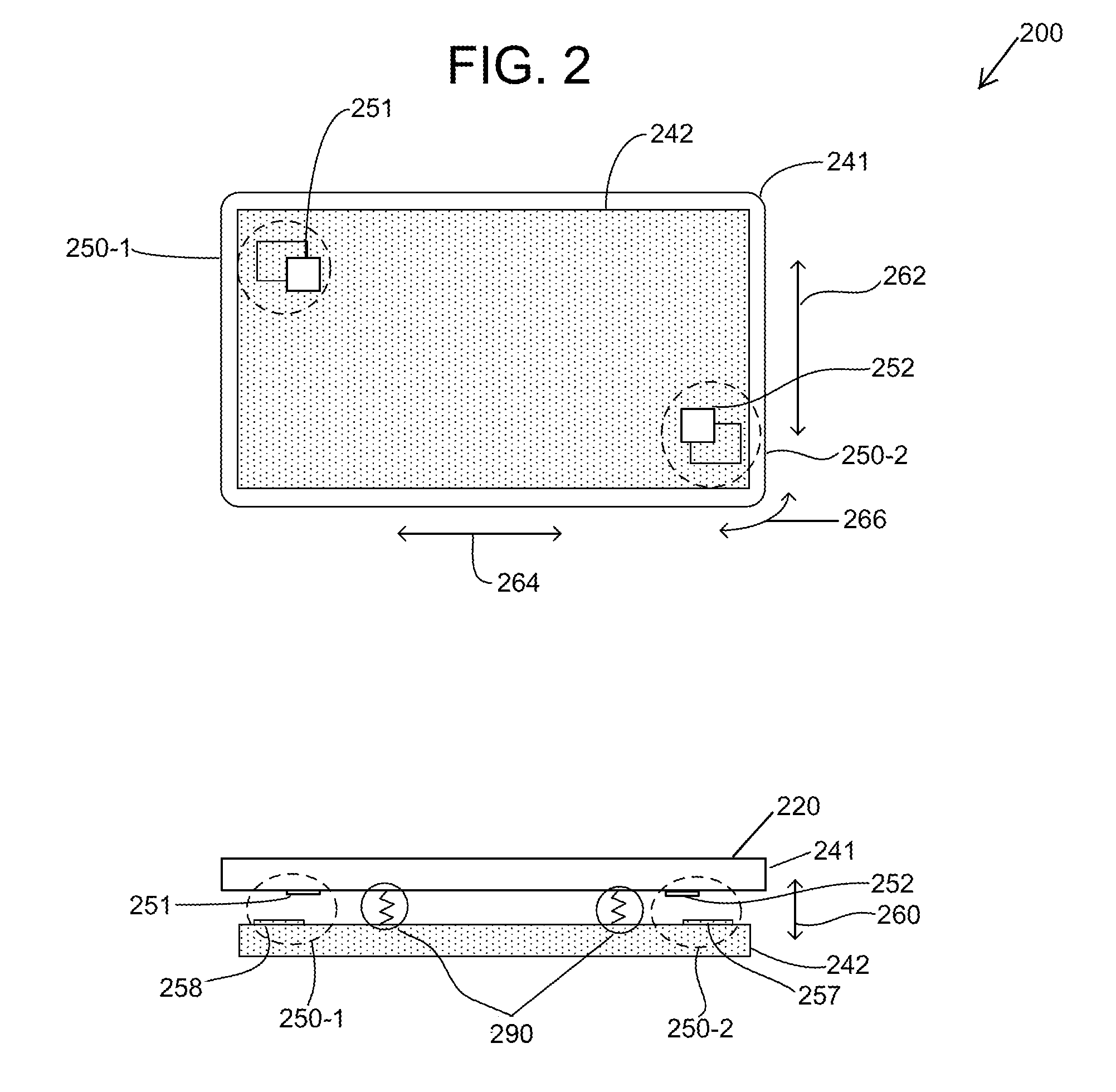Shear force detection using capacitive sensors
a capacitive sensor and capacitive technology, applied in the field of electrical devices, can solve the problems of limited accuracy and complex construction, limited flexibility of proximity sensor devices to function as input devices, and limited use of sensors, so as to facilitate the improvement of input device performance, improve the ability to determine, and increase the input functionality for users.
- Summary
- Abstract
- Description
- Claims
- Application Information
AI Technical Summary
Benefits of technology
Problems solved by technology
Method used
Image
Examples
first embodiment
[0085]In a first embodiment, a first force sensor 750-1 of FIG. 7 comprises at least one force sensor electrode 751-1, and the second substrate 742, which is conductive, comprises a non-conductive portion 754-1. In some embodiments, this non-conductive portion 754-1 may be an aperture in the second substrate or an insulator disposed on the second substrate. Thus, the first force sensor electrode 751-1 partially overlaps the non-conductive portion 754-1 and a conductive portion of the conductive substrate 742. In response to motion of the second substrate in a first direction (e.g. direction 764) relative to the first substrate (not shown) and the at least one force sensor electrode 751-1, the area of overlap between the at least one force sensor electrode 751-1 and the conductive portion of substrate 742 changes. This results in a change of the variable capacitance formed between the at least one force sensor electrode 751-1 and the conductive portion of the second substrate 742. Sp...
second embodiment
[0086]In a second embodiment, a second force sensor 750-2 of FIG. 7 comprises at least one force sensor electrode 751-2, and the second substrate 742, which is conductive, comprises non-conductive portions 754-2. In some embodiments, the non-conductive portions 754-2 may be apertures in the second substrate or an insulator disposed on the second substrate. Thus, the second force sensor electrode 751-2 partially overlaps the non-conductive portions 754-2 and a conductive portion of the conductive substrate 742. In response to motion of the second substrate in a first direction (e.g. direction 764) relative to the first substrate (not shown) and the at least one force sensor electrode 751-2, the area of overlap between the at least one force sensor electrode 751-2 and the conductive portion of substrate 742 changes. This will result in a change of the variable capacitance formed between the at least one force sensor electrode 751-2 and the conductive portion of the second substrate 74...
third embodiment
[0087]In a third embodiment, a third force sensor 750-3 of FIG. 7 comprises at least one force sensor electrode 751-3 and a conductive portion 756-3 disposed on the non-conductive second substrate 742. Thus, the third force sensor electrode 751-3 partially overlaps the conductive portion 756-3 of the non-conductive substrate 742. In response to motion of the second substrate in a first direction (e.g. direction 764) relative to the first substrate (not shown) and the at least one force sensor electrode 751-3, the area of overlap between the at least one force sensor electrode 751-3 and the conductive portion 756-3 of second substrate 742 changes. This results in a change of the variable capacitance formed between the at least one force sensor electrode 751-3 and the conductive portion 756-3 of the second substrate 742. Specifically, motion along the first direction 764 results in a greater / lesser area of overlap between the conductive portion 756-3 of the second substrate 742 and th...
PUM
 Login to View More
Login to View More Abstract
Description
Claims
Application Information
 Login to View More
Login to View More - R&D
- Intellectual Property
- Life Sciences
- Materials
- Tech Scout
- Unparalleled Data Quality
- Higher Quality Content
- 60% Fewer Hallucinations
Browse by: Latest US Patents, China's latest patents, Technical Efficacy Thesaurus, Application Domain, Technology Topic, Popular Technical Reports.
© 2025 PatSnap. All rights reserved.Legal|Privacy policy|Modern Slavery Act Transparency Statement|Sitemap|About US| Contact US: help@patsnap.com



